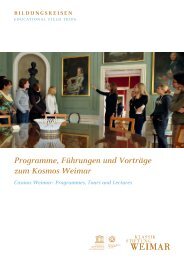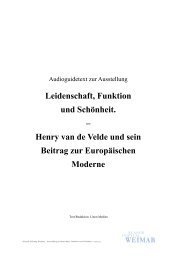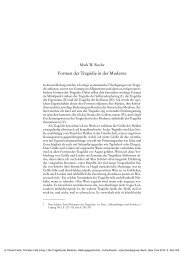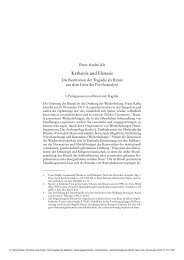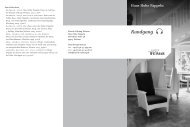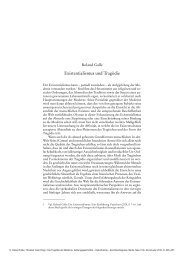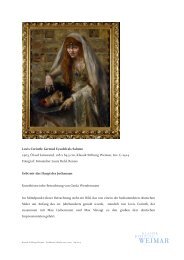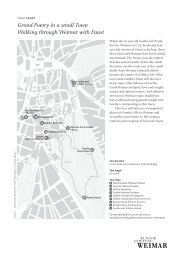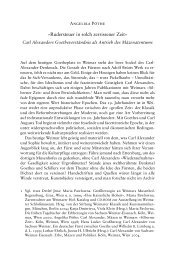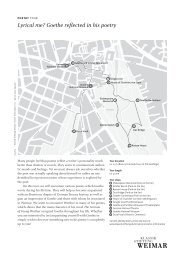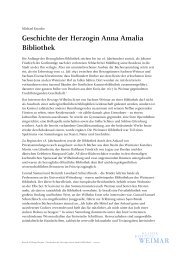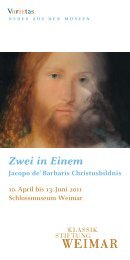FRANZ LISZT · EIN EUROPÃER IN WEIMAR - Klassik Stiftung Weimar
FRANZ LISZT · EIN EUROPÃER IN WEIMAR - Klassik Stiftung Weimar
FRANZ LISZT · EIN EUROPÃER IN WEIMAR - Klassik Stiftung Weimar
Create successful ePaper yourself
Turn your PDF publications into a flip-book with our unique Google optimized e-Paper software.
Liszt’s Hungarian passport, 1874<br />
Franz Liszt, statuette by Károly Dosnyay, 1840<br />
And because I showed myself as I was: an enthusiastic<br />
child, a firm believer, in a word everything one<br />
is when one is 18 […], because I did not know how<br />
to play comedy, I gained the reputation – of being<br />
an actor.<br />
Liszt, Reisebriefe eines Baccalaureus der Tonkunst<br />
(Travelogues by a Baccalaureate of Musical Art), 1837<br />
The first part of the exhibition in the Schiller Museum follows<br />
the stages of Liszt’s life from the multicultural climate of the<br />
Habsburg monarchy via Paris, Switzerland, Italy and the virtuoso<br />
tours to <strong>Weimar</strong>, where most of his major compositions were<br />
written over a period of little more than ten years. These stages are<br />
presented in the form of a pilgrimage with <strong>Weimar</strong> as the destination<br />
and climax. The exhibition documents not only Liszt’s work<br />
and compositions, but also his significance in Europe’s history of<br />
music and thought.<br />
As a pianist, Liszt’s concert tours in the late 1830s and early<br />
1840s took him all over Europe – from Paris to Constantinople,<br />
from Milan to St. Petersburg. He came to <strong>Weimar</strong> quite early, where<br />
he was appointed the court’s music director extraor dinaire in 1842.<br />
In Berlin, Liszt triggered an unparalleled “Lisztomania”, the effects



